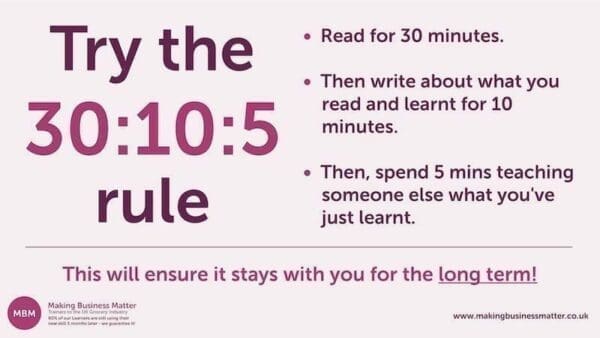Sandler Success Principles: About the Book
A Wall Street Journal & Business Week Bestseller. #1 Amazon Sales Book. Giving ’11 insights that will change the way you THINK and SELL’. From David Mattson, the author of ‘The Sandler Rules’, comes this follow up title ‘Sandler Success Principles’, co-authored by Bruce Seidman.
In the Sandler Success Principles David Mattson and Brice Seidman, both partners at Sandler Systems, take us through how we think about selling and bring it home with some powerful stories.
This book was just under £5 used and about 136 pages. It contains around 30,000 words which would take the average reader about 2.5 hours to read, with 60% comprehension.
Overview
The two authors at Sandler clearly know what they are talking about because the book oozes experience. The type of experiences that goes beyond the obvious techniques and into the ‘We’ve been there, seen that and done it’. In an easy to read way.
The challenge with the book is that the authors obviously work for the company and are keen to push their techniques. Now, if those techniques are successful, then why not? The cynic in me is never a big fan of the self-publicising company books, but I think these guys get away with it because the stuff is useful.
I was hooked at the start by the preface that said, ‘Perceptiveness and self-awareness are certainly two indispensable skills for reaching high levels of selling success’. I liked this because I value these skills in particular and because they were less obvious than what I thought they would say.
The book claims that these are 11 insights that will change the way you think and sell. There are some insights that bowled me over and got me thinking differently. Not all 11 success principles, however, but a few, and that’s good enough!
The 11 Sandler Success Principles:
#1 There Is No Growth Without Pain
This principle is largely about goal setting and how much you are prepared to do whatever it takes to achieve them.
#2 Keep Your Belly Button Covered
Selling is hard and can be emotionally draining. Understanding how to get through, what feels like personal attacks, is this principle.
#3 No One Can Enter Your Castle Without Your Permission
Your castle is the place where people aren’t let in because it is your core, your safe place. Protecting yourself emotionally is key. And not letting those unpleasant experiences linger.
#4 Avoid Reach-Back and After-Burn
‘Overindulging in preparation – like overindulging in chocolate or alcohol – may make you feel good for a while, but there will be a price to pay, and it won’t be pleasant’. This principle is about not wasting your time on worry, prioritising action instead.
#5 There’s a Difference Between Who You ‘I’ and What You ‘R’
A great story told about Anna. In essence, Anna is put into a poor performing territory and earns £50k. They then promote Anna, only to put her in a bigger poor performing category. Anna still earns £50k! Anna believes that this is what she is worth. How much do you believe you are worth?
#6 People Make Buying Decisions Emotionally and Justify Those Decisions Intellectually
To buy a phone is an intellectual decision because it is broken. Choosing the colour and brand is an emotional one. People make buying decisions emotively first.
#7 Seventy Percent of Your Selling Behaviour Comes from Your Nurturing Parent
A nurturing Parent will evoke OK emotions in the other person. People are more likely to buy when they feel OK. Be the nurturing Parent who reassures, comforts, and supports, when you sell.
#8 Zero Percent of Your Selling Behaviour Comes from Your Critical Parent
Do not lecture your prospects. They will not buy.
#9 Thirty Percent of Your Selling Behaviour Comes from Your Adult
‘By asking good questions and conducting responsible investigations in the Adult mode…’.
#10 Zero Percent of Your Selling Behaviour Comes from Your Child
The Child might react to a prospect review by saying that they will review their vendors with:
‘If you do that you’ll be going back on your word’.
But it is much better to say:
‘Can you help me out, please? When you say “review your vendors”, what do you mean please?’.
#11 If You Are Only What You Were Told to Be, You Are Less Than What You Could Be
This is about recognising negative behaviours that hold us back when selling. For example, from your childhood, needing approval, which can be costly when selling.
David and Bruce refer to it as the ‘Bowling pin syndrome’. If a ball rolls at them, they fall down. We can make a conscious choice to react differently.

Final Thoughts
In all, the advice is sound. However, note that the teaching is more psychological than practical tips. It is more about your mindset than anything else, which, although, is one man’s opinion, is very useful. I’d recommend reading it because it is full of experience, the stories are powerful, and at only 2.5 hours, considerably shorter than many business books.
In terms of learning transfer, I believe you’ll grab a notion that sales are about mindset, which will help, and at least one of the stories will resonate.





